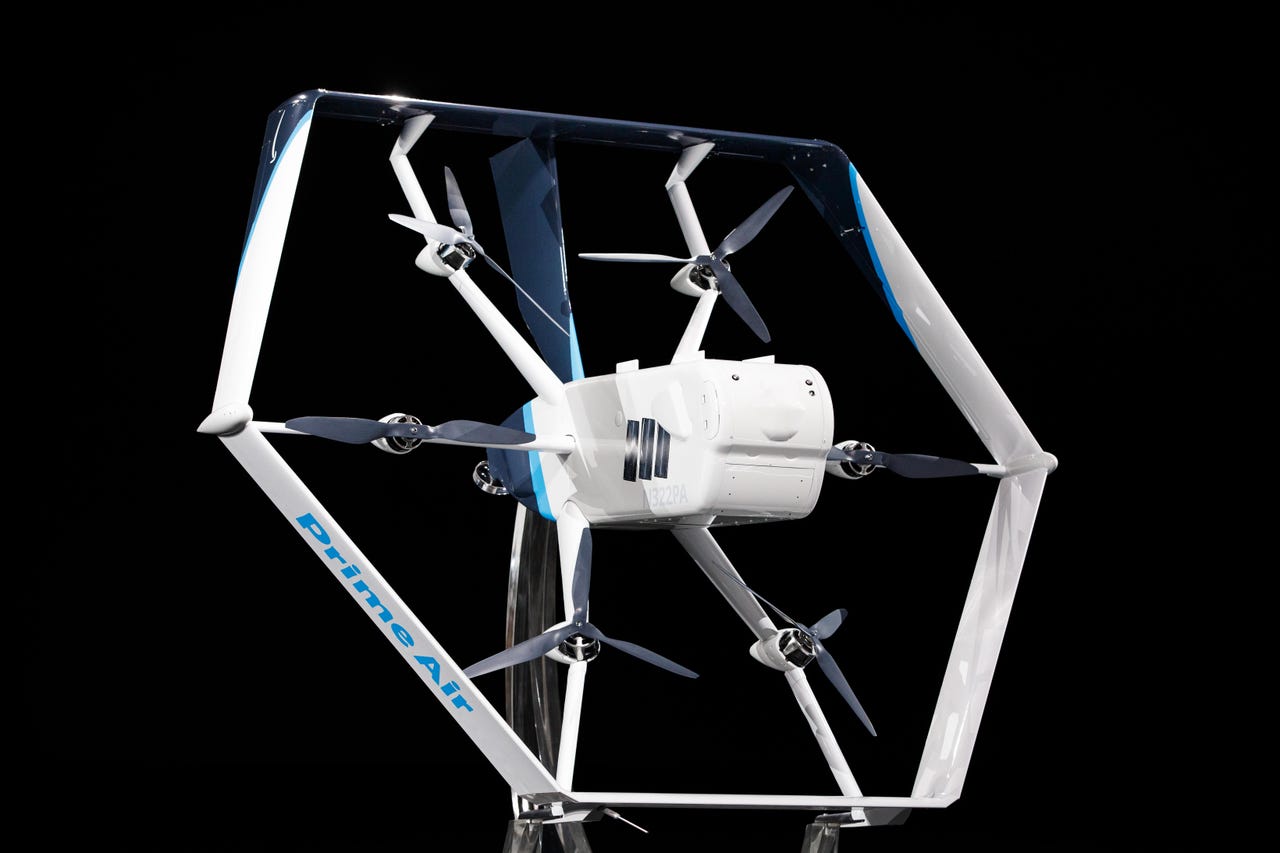Amazon unveils drone it says will be delivering packages within months


Amazon on Wednesday announced a new commercial delivery drone that it says will be delivering packages to customers in months. The new drone marks a huge milestone for Amazon's Prime Air program, which has since its inception developed more than two dozen drone designs.
The new machine, unveiled on stage at the re:Mars conference, is fully electric. It can fly up to 15 miles and deliver packages under five pounds to customers in less than 30 minutes. While limiting its use to packages that are five pounds or less may not sound impressive, that represents 75 percent to 90 percent of packages that Amazon delivers today, according to Jeff Wilke, CEO of Amazon's Worldwide Consumer division.
"The opportunity is tremendous," Wilke said in a re:Mars keynote address.
Also: Amazon's re:Mars serves up AI inspiration
The drone will be part of Amazon's extensive delivery network, which includes 50 cargo planes, 19,000 trailers, 30,000 delivery vans and other assets. Its debut coincides with Amazon's enhancement of its Prime program into a one-day delivery service.
Must-see offers
Speaking to reporters following the keynote address, Wilke said that Amazon cannot yet say where exactly it will begin drone deliveries.
"We're working with several of the regulatory agencies to make sure we have the approval we need," he said.
In the US, stringent regulatory restrictions have hampered the rollout of commercial delivery drones. In April, the US Federal Aviation Administration (FAA) gave Alphabet-owned Wing the green light to begin commercial drone deliveries -- by granting it an air carrier certification that allows it to bypass certain drone regulations.
Separately on Wednesday, the FAA said it issued Amazon an "experimental airworthiness certificate" for its drones.
"We do have permission to do testing," Wilke said. "Our objective is to have a certified commercial program" within months.
Wilke stressed repeatedly that the drone was primarily designed with safety in mind.
"A safe, truly autonomous drone was the only option for us," he said.
It relies on multiple sensors, including visual, thermal and ultrasonic sensors to understand its environment. It also relies on machine learning for object detection, including a proprietary computer vision algorithm to detect moving objects like paragliders on the horizon. Amazon also developed geometric computer vision technology to help overcome one of the hardest challenges for drones -- detecting wires.
"From paragliders to power lines... the drone has safety covered," Wilke said.
The aircraft is designed to handle both vertical takeoffs and landings, like a helicopter, as well as forward flight. It can easily transition between the two modes, Amazon says.
Its wings also double as safety shrouds, and it boasts six degrees of freedom, as opposed to the standard four found on a quadcopter.
Currently, Amazon envisions landing the drones in customers' backyards. "Over time with the proper regulatory approval and designs, you could imagine different places drones could land," Wilke said.
Asked whether customers are ready to accept drones landing in their yards, Wilke referenced the 2016 drone trials Amazon conducted in the UK.
"I was really delighted with the response," he said. "When they can get something in less than 30 minutes and it just works... I think you start to become at ease with this. Will everybody be at ease with this immediately? No, but that's why we want to get started."